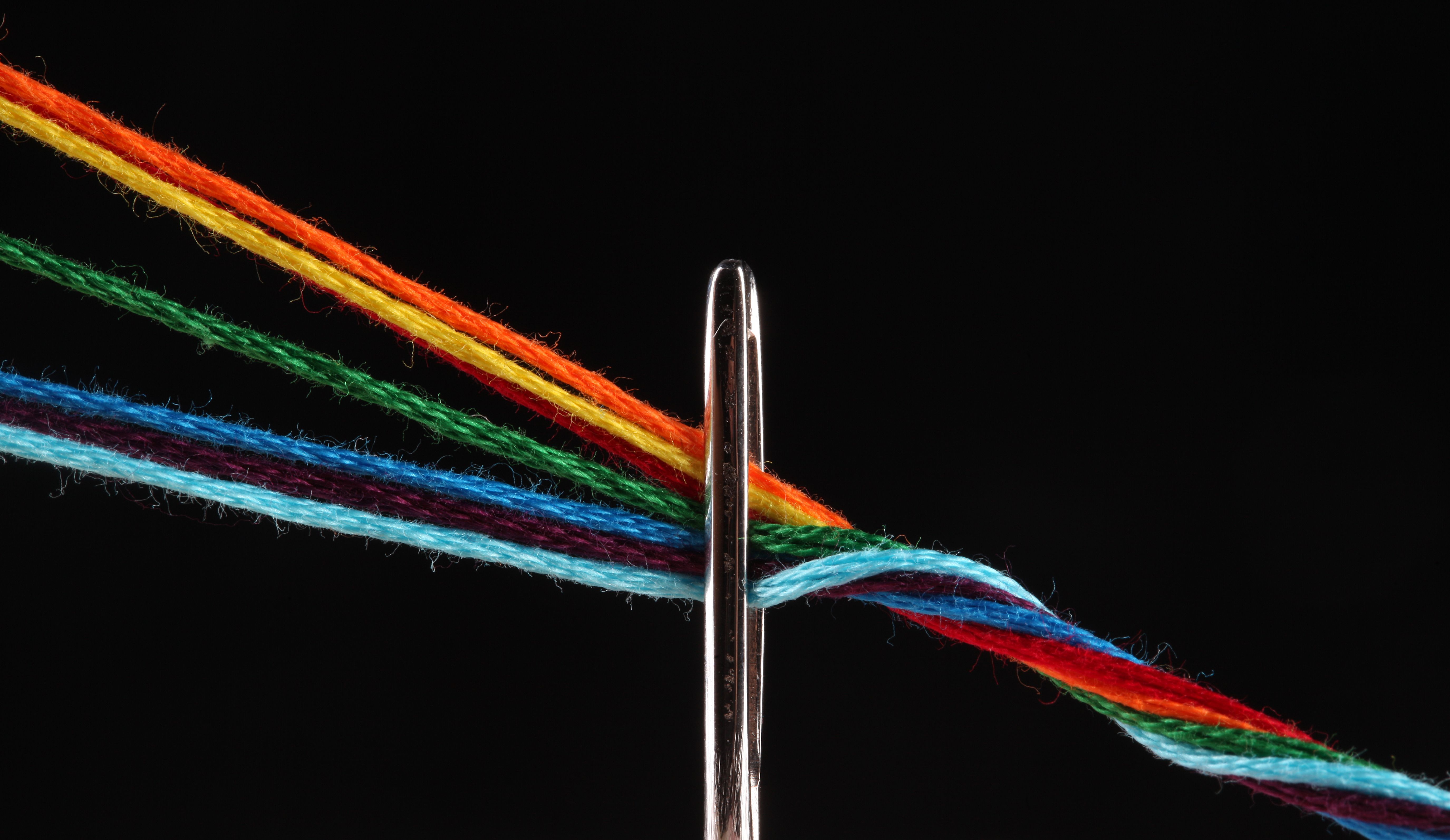Miniaturization of Separation Techniques Using Paper and Thread as Substrates
Microfluidic devices are considered ideal for fabricating portable diagnostic equipment for point-of-care testing, but substrates more environmentally friendly than glass or plastics are attracting interest.
A trio of researchers in the chemistry department at Shiraz University in Iran has published a report on chromatographic separations based on paper or thread substrates, reviewing recent developments in miniaturizing such separation techniques for use in portable diagnostics (1). Their study in the Journal of Chromatography A reexamines research mostly conducted since 2015, though skews earlier in certain aspects, and concerns separations performed not only broadly with chromatography, but also specifically by electrophoresis.
bright iridescent thread floss for embroidery and needlework | Image Credit: © Тимур Салман

Neither paper- nor thread-based chromatography requires external electrical power or a pump, authors Bahram Hemmateenejad, Elmira Rafatmah, and Zahra Shojaeifard said, because the mobile phase flows automatically through pores in those materials, carrying the analytes of a sample pre-deposited on the substrate (1). In electrophoresis, broken out into its different types (capillary, free-flow, gel, and zone, namely), the supporting media can be one factor that determines what technique will be used—and the researchers suggest in their conclusion that the correct choice could narrow the required applied potential down to tenths of volts. Overall, however, as smaller measurement and point-of-care testing materials are desired by separation scientists, there is a need for more environmentally friendly substrates for microfluidic devices that may not need external pumps.
Such a distinction is why these researchers sought to stray from glass or plastic substrates, which necessitate pumps for solutions to flow through their channels. On the contrary, paper or thread are considered accessible and portable, are biodegradable, and can be had for a low cost (1). Rather than being pumped, according to the study, microfluidic paper- or thread-based analytical devices (µPADs or µTADs, respectively) allow transport of fluid by wicking action or gravitational or electrophoretic forces. Interestingly, separation scientists like the researchers in this study have come to accept both natural (cotton, linen, silk, wool) and artificial (acrylic, nylon, polyester, polyethylene, polypropylene, polyurethane) threads as viable µTAD options, although µTAD prevalence pales in comparison to the frequency of µPAD applications.
In paper-based microfluidics, precise patterns can be created using techniques like wax printing or inkjet printing to control fluid flow. Similarly, thread-based microfluidics involves threading narrow channels through a porous material like fabric, enabling controlled fluid movement along the thread's surface. Both approaches are cost-effective, easy to fabricate, and suitable for point-of-care diagnostics, environmental monitoring, and resource-limited settings where complex fluid manipulation is not feasible.
Most µPAD or µTAD applications fall under the umbrellas of environmental, food safety, diagnostic, or health monitoring, with the researchers in this study singling out attention paid in recent years to separation of blood cells and blood plasma (1). Although other biofluids like saliva, tears, and urine have been analyzed in similar ways, the U.S. Food and Drug Administration (FDA) has approved blood tests that are used in clinical diagnoses of anemia, cancer, coronary heart disease, diabetes, HIV, and other illnesses and diseases.
The advantages of paper or thread substrate material used in separations are well-defined in this study, not only for the reasons already listed, but also taking into account the high standards of strength, flexibility and performance for µTADs and compatibility with methods such as colorimetry and mass spectrometry for µPADs (1). Different designs can also be deployed as ways of miniaturizing and mobilizing selected separation techniques. But the researchers acknowledge that modifications continue to be made to the use of both paper and thread, suggesting that further investigation and reporting will be needed to evaluate the continued effectiveness of these materials in the future.
Reference
(1) Hemmateenejad, B.; Rafatmah, E.; Shojaeifard, Z. Microfluidic paper and thread-based separations: Chromatography and electrophoresis. J. Chromatogr. A 2023, 1704, 464117. DOI: 10.1016/j.chroma.2023.464117
Study Examines Impact of Zwitterionic Liquid Structures on Volatile Carboxylic Acid Separation in GC
March 28th 2025Iowa State University researchers evaluated imidazolium-based ZILs with sulfonate and triflimide anions to understand the influence of ZILs’ chemical structures on polar analyte separation.
Study Explores Thin-Film Extraction of Biogenic Amines via HPLC-MS/MS
March 27th 2025Scientists from Tabriz University and the University of Tabriz explored cellulose acetate-UiO-66-COOH as an affordable coating sorbent for thin film extraction of biogenic amines from cheese and alcohol-free beverages using HPLC-MS/MS.
Quantifying Microplastics in Meconium Samples Using Pyrolysis–GC-MS
March 26th 2025Using pyrolysis-gas chromatography and mass spectrometry, scientists from Fudan University and the Putuo District Center for Disease Control and Prevention detected and quantified microplastics in newborn stool samples.





